Heron's-bills - mostly weeds, one native (Erodium species)
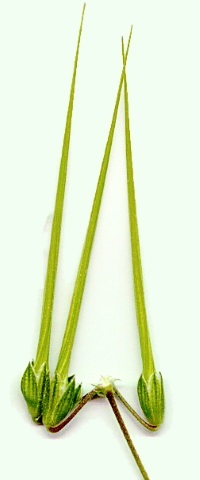
Family: Geraniaceae (Geranium family).
Native to the Mediterranean region and Europe (for the introduced species).
Occurrence: Widespread and very common in pastures and roadsides. The non-native species are environmental weeds. The native Blue Heron's-bill is fairly common in northern grasslands and grassy woodlands.
Identification: Heronís-bills differ from other members of the geranium family in that the flowers are radially symmetrical, and the flowers are in groups of more than two. All have the seeds contained in beaks
- the plants are prostrate or semi-prostrate
- the leaves are toothed, in lobes, or in leaflets
- the flowers are purplish to blue
- the fruit are in long to medium beaks.
The three groups in the geranium family are
- Geraniums. 5 equal petals, leaves round (but usually deeply incised).
- Erodiums. 5 equal petals. Leaves are more or less oval, or divided into leaflets.
- Pelargoniums. The upper petals are larger than the three lower petals.
The three groups are known as stork's-bills, heron's-bills or crane's-bills, from the long pointed seed cases. Pelargoniums are common garden plants, often loosely called geraniums.
There are a several common species of erodium.
Name. Erodium: Greek erodios: a heron.
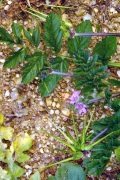 Musky Heron's-bill Erodium moschatum Leaf with leaflets along the main leaf stalk; leaflets toothed.
Musky Heron's-bill Erodium moschatum Leaf with leaflets along the main leaf stalk; leaflets toothed.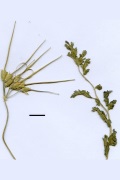 Common Heron's-bill Erodium cicuarium Leaf with leaflets along the main leaf stalk; leaflets deeply divided. Leaves less than 5cm.
Common Heron's-bill Erodium cicuarium Leaf with leaflets along the main leaf stalk; leaflets deeply divided. Leaves less than 5cm.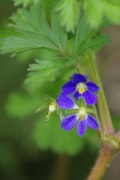 Blue Heron's-bill Erodium crinitum Leaflets more or less trifoliate (three lobed).
Blue Heron's-bill Erodium crinitum Leaflets more or less trifoliate (three lobed).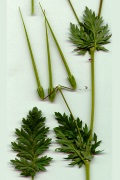 Long Heron's-bill Erodium botrys Upper leaves deeply lobed. Awns mostly longer than 8cm.
Long Heron's-bill Erodium botrys Upper leaves deeply lobed. Awns mostly longer than 8cm.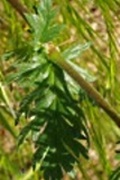 Short Heron's-bill Erodium brachycarpum Upper leaves deeply lobed. Awns mostly shorter than 8cm.
Short Heron's-bill Erodium brachycarpum Upper leaves deeply lobed. Awns mostly shorter than 8cm. Oval Heron's-bill Erodium malacoides Leaves toothed but not deeply divided ino lobes.
Oval Heron's-bill Erodium malacoides Leaves toothed but not deeply divided ino lobes.